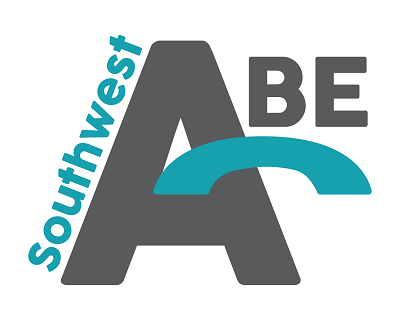- MN ABE Connect
- Archive
- 10 Tips for Implementing the New CASAS Tests
 March 25, 2024
March 25, 2024
10 Tips for Implementing the New CASAS Tests
Marty Olsen, Assessment TrainerIf you’re in the middle of transitioning to the newest approved tests, you might be feeling like the grumpy cat above. You felt the old tests were tired and worn out, but now you realize there are changes that may need to be made as you implement the new tests. Take a deep breath and look at the test tips below as you wade through the changes. The new tests that we’re going to focus on are CASAS STEPS for ESL (Reading and Listening) and CASAS Math GOALS 2.
TEST TIPS:
#1 – Ensure that your students have the opportunity to posttest in CASAS Life and Work, or in CASAS Math GOALS prior to June 30, 2024.
Yes, we do have new tests, however the CASAS Life and Work series and the CASAS Math GOALS series have had their approval extended through June 30, 2024. Don’t miss an opportunity to posttest students that have a pretest in any of these assessments, once they reach the 40 hour attendance mark. This will improve our posttest percentages as well as open the possibility of increasing our MSG percentages.
#2 – The STEPS series is designed only for learners for whom English is not their first language.
The STEPS series is only appropriate for EL learners who score less than 239. All other learners should start with a CASAS GOALS or TABE 11&12 test. When an EL learner scores 239 or higher on STEPS, they should be tested with CASAS GOALS or TABE 11&12.
In addition, the CASAS Math GOALS 2 is the only CASAS Math test that will be eligible for reporting purposes after July 1, 2024. It can be used to assess math skills for all learners. Learners will earn an ABE Educational Functional Level for Math, and that’s acceptable.
#3 – Once your program is ready to implement STEPS or Math GOALS 2, you can administer them at any time.
These are both new series, so there is no need to wait 40 hours since the last test in Life and Work or Math GOALS. Your program can implement the use of the new tests when you are ready, and still keep tabs on when learners are ready to posttest in the old series. Counting of hours in all series can be done concurrently.
#4 – When transitioning from Life and Work to STEPS, learners should be given a STEPS Appraisal to determine the appropriate level of STEPS to administer.
The exception to this is that Beginning Literacy students should skip the Appraisal and be given a Level A test (Forms 621 or 622). See Sample Test Items to learn more about Level A, and recognize the similar item types as seen in Beginning Literacy forms 27 and 28.
#5 – The Educational Functioning Level Descriptors remain the same, however the scale score ranges on the new tests are different than previous tests.
You can find the ESL Educational Functioning Levels in your Test Administration Manuals. These descriptors detail the skills learners should be able to exhibit as they exit each functioning level. The Reading STEPS Scale Scores and Grade Level Equivalents document is available on the CASAS website and details the new scale scores associated with the STEPS test levels, as well as suggesting grade level equivalents for each of the levels.
#6 – If you have not already done so, consider adding the CASAS STEPS Listening tests to your testing protocol.
As with the Reading STEPS Test Administration Manuals, you can find the ESL Educational Functioning Levels in the Listening STEPS Manuals to learn more about the learner skills that should be exhibited as they exit each level. Also, the Listening STEPS Scale Scores and Grade Level Equivalents document details the scale scores associated with the STEPS Listening test.
#7 – Compare your students’ Life and Work scores to their STEPS tests.
Once you have started testing with the new tests, spend some time evaluating your STEPS testing data and comparing it to your previous Life and Work data. Some early users of the STEPS tests have found learners to be scoring lower on the new tests. Your test results may indicate that there may be a need to adjust your class cut scores.
#8 – Ensure that your teachers are aware of the Educational Functioning Level to CASAS Score to Grade Level information, as well as the Sample Test Items for each series.
All of the information found in the links in Tips 4, 5, 6, and 7 should be shared with teaching staff. This information will enable teachers to better able understand their students’ needs. They will be instrumental in deciding placement cut scores for class placement.
Additionally, teachers should spend some time looking at the Sample Test Items for each of the series to gain more understanding of the look of these new tests.
- CASAS Reading STEPS for ESL
- CASAS Listening STEPS for ESL and Listening STEPS Sample Items Audio
- CASAS Math GOALS 2
#9 – CASAS provides instructional aids to help teachers focus their instruction on the needs of the students.
CASAS has aligned the STEPS assessments to the English Language Proficiency Standards, which are closely tied to the College and Career Readiness Standards. CASAS has created blueprints that detail the content standard focus of each assessment that teachers can use as they plan their lessons. Review the blueprints at the links below:
Additionally, the tests incorporate the CASAS Competencies, and CASAS has provided the blueprints below to assist teachers in determining the competency areas that are tested in STEPS.
The Math GOALS 2 tests are also based on the College and Career Standards along with the CASAS Competencies.
#10 – CASAS Quick Search can be used to locate specific materials that will address the competencies that are tested in the STEPS and Math GOALS 2 series.
CASAS QuickSearch Online is a free database found on the casas.org website. You can search by competency, and the results will list print, audio, visual, and computer-based instructional materials correlated to the competencies chosen.
 You’re not in this transition alone!
You’re not in this transition alone!
Take some time to consider these 10 tips and review the links. Hopefully this will help you to feel more confident and comfortable with the new tests. By the end of your study, you will find yourself leaving the grumpy behind and feeling more like this happy cat family!
Questions?
For any questions, feel free to contact assessment trainer Marty Olsen at [email protected]

Newsletter Signup
Get MN ABE Connect—the official source for ABE events, activities, and resources!
Sign UpArticle Categories
- ABE Foundations/Staff Onboarding
- ACES/Transitions
- Adult Career Pathways
- Assessment
- CCR Standards
- Citizenship
- COVID-19
- Cultural Competency
- Digital Literacy/Northstar
- Disabilities
- Distance Learning/Education
- ELA
- Equity/Inclusion
- ESL
- HSE/Adult Diploma
- Listening
- Math/Numeracy
- Mental Health
- Minnesota ABE
- One-Room Schoolhouse/Multilevel
- Professional Development
- Program Management
- Reading
- Remote Instruction
- Science
- Social Studies
- Speaking/Conversation
- Support Services
- Teaching Strategies
- Technology
- Uncategorized
- Volunteers/Tutors
- Writing